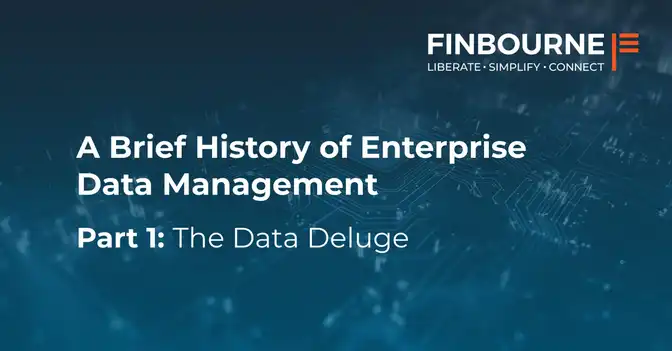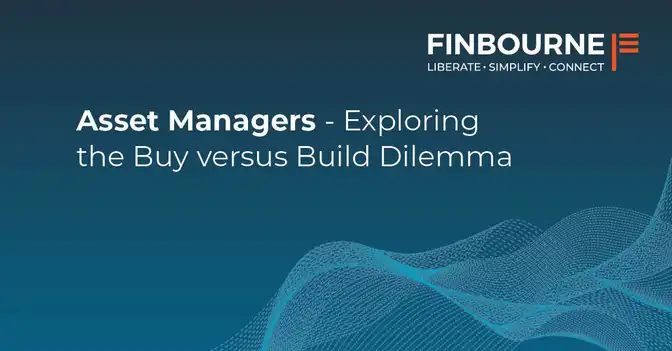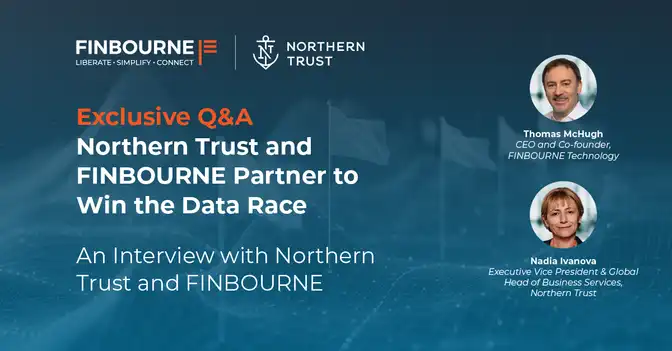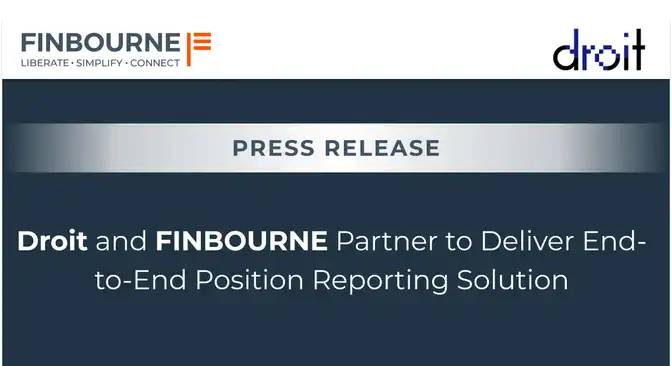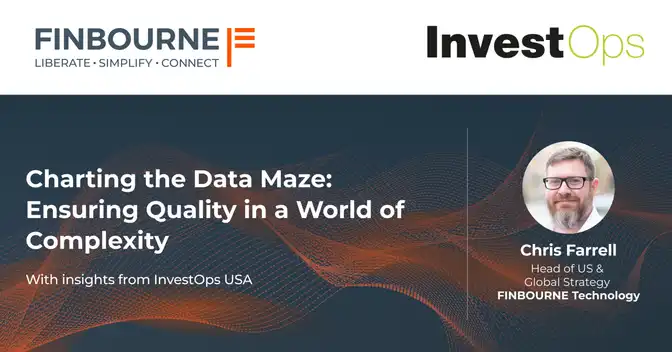Data is often hailed as the cornerstone of investment firms, yet it’s the accuracy, timeliness, and accessibility of this data that truly empowers them. In the first of a two-part series on the history and future of Enterprise Data Management (EDM) in investment management we look at the evolution of EDM, tracing its development from simple data collection and storage to complex information systems that have been fundamental to the growth of the industry.
The history of EDM began to unfold in earnest during the 1960s and 1970s, a period marked by significant shifts towards digitisation within global finance. These early stages of EDM focused on streamlining the vast and growing volumes of investment data that businesses began to accumulate. This era’s initial steps were crucial, setting the stage for what would become a sophisticated integration of technology and data management strategies.
The dawn of the data challenge
As the amount of investment data began to grow exponentially, financial institutions grappled with the sheer volume and complexity. Manual data handling not only hindered operational efficiency but also amplified the risks associated with data inaccuracies and emerging compliance requirements.
The result was inefficiencies that financial services could ill afford, especially in a competitive landscape marked by rapid technological advancements and escalating regulatory demands.
As the limitations of traditional data management became increasingly untenable, the financial industry sought solutions from early EDM providers. These solutions endeavoured to streamline data processing, enhance data quality, and ensure regulatory compliance.
Enter ETL
Extract, Transform, Load (ETL) processes were foundational in managing and leveraging the ever increasing volume and complexity of data effectively. ETL provided a systematic approach for collecting data, converting it into a consistent format suitable for analysis and storage, and then loading it into a database. By standardising the data integration process, ETL enabled investment firms to aggregate and organise vast amounts of financial, market, and transaction data. This consolidation was essential for analytical tasks, such as trend analysis, risk assessment, and portfolio management.
ETL processes helped maintain data integrity and reliability. This was vital for investment enterprises aiming to gain a competitive edge through data-driven insights.
Cloud computing: Bringing EDM into the 21st Century
With the advent and subsequent widespread adoption of cloud-based computing after the turn of the millennium, organisations can now access dedicated data management resources in the cloud. This shift has become an essential pillar of digital transformation and it opens up new avenues for cost savings, scalability, and innovation, fundamentally changing how firms approach data management.
In more recent years firms have faced ever-increasing challenges around the disparate nature of data storage, with investment data increasingly siloed across numerous systems, including on-premise, hardware-based solutions. The cloud serves as a unifying platform, allowing firms to seamlessly integrate both their existing internal technological infrastructure and also access cutting-edge technologies such as data visualisation, trading and regulatory solutions.
Cloud-based EDM solutions all offer robust security protocols, comprehensive data lineage and effective recovery mechanisms. These features are vital, addressing the paramount concerns of data integrity and availability head-on. By ensuring that data is both secure and readily accessible, cloud computing provides a foundation for organisations to build upon, empowering them to navigate the complexities of modern data management with confidence.
Read more on the route to cloud ROI in our recent thought leadership article here.
Looking ahead – what’s next for EDM?
As we look to the future, the continuous innovation and refinement of EDM solutions will help firms turn their data management from fragmentation to integration, from manual to automated, from reactive to proactive. This will turn the tide from data overload to data optimisation, where every byte of data serves a purpose, driving insights and value across organisations.
The ongoing advancements in cloud computing, artificial intelligence, and machine learning are set to further elevate the capabilities of EDM systems, enabling firms to harness the full power of their data like never before.
Read part two of this series as we look into what the future holds for EDM and how FINBOURNE is helping firms unlock the true power of their investment data.
